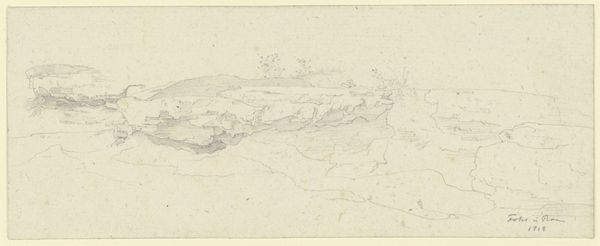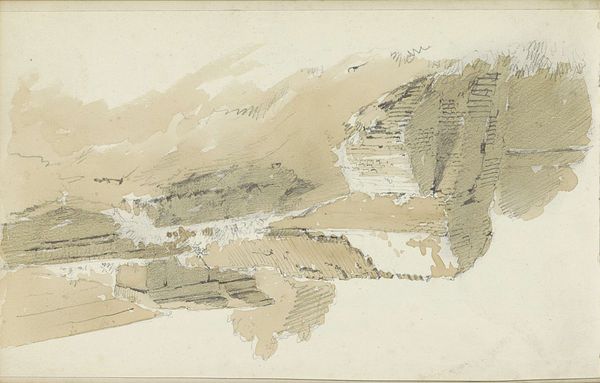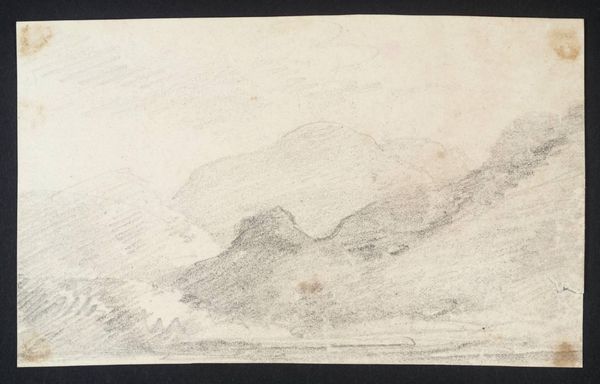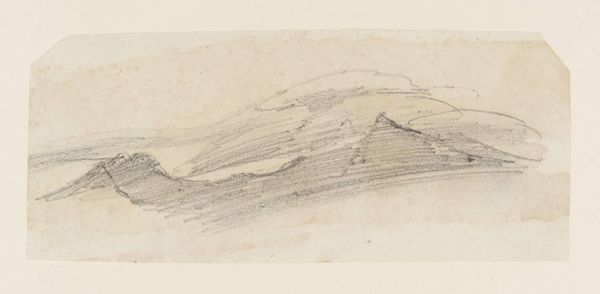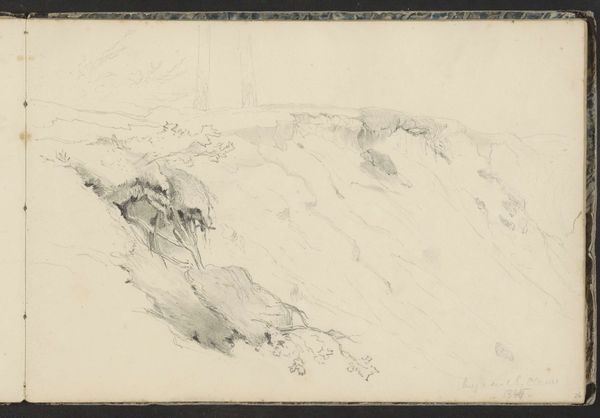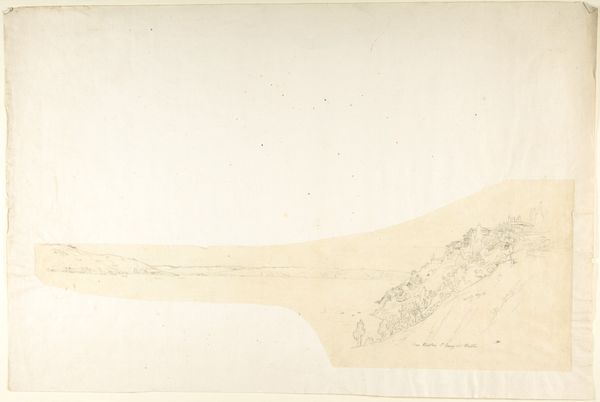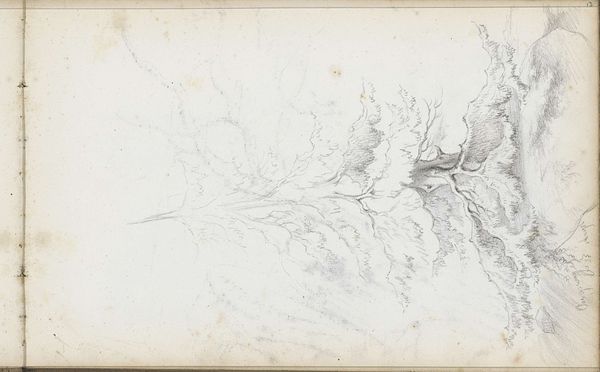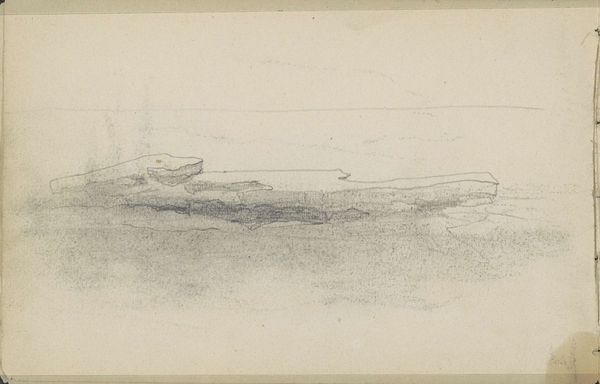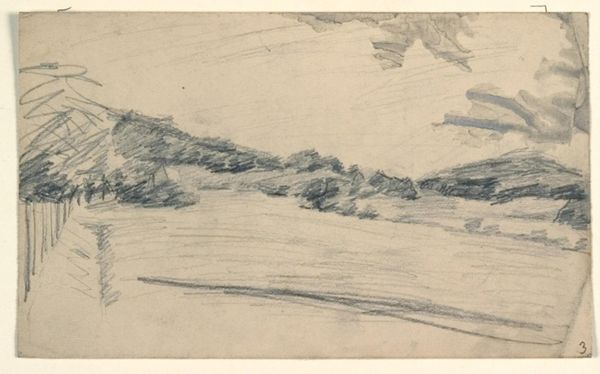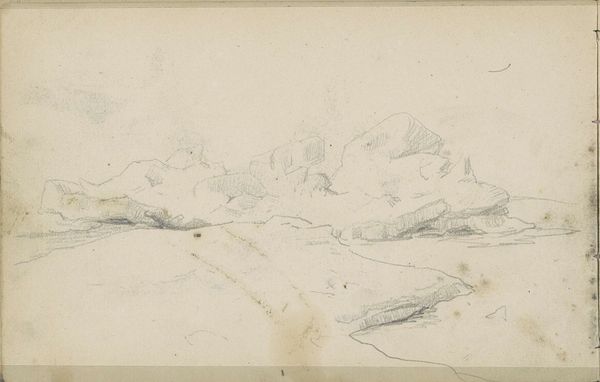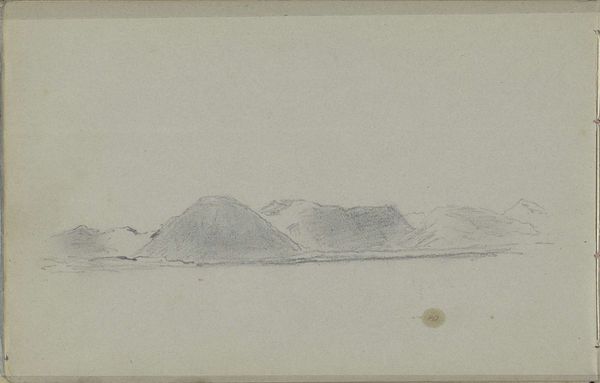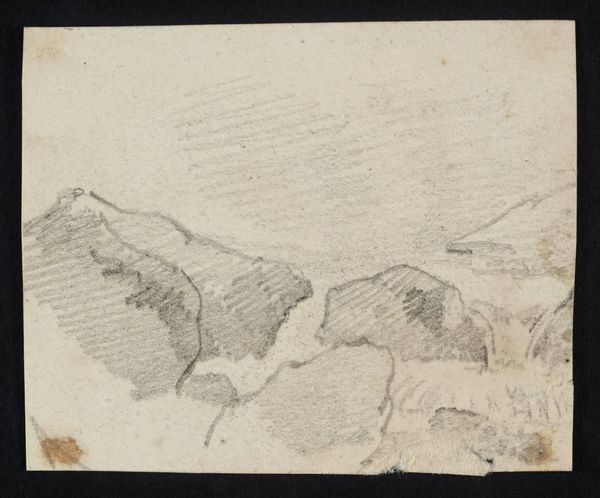
drawing, paper, pencil, graphite
#
drawing
#
toned paper
#
pencil sketch
#
landscape
#
bird
#
paper
#
pen-ink sketch
#
pencil
#
graphite
#
sketchbook art
Copyright: Rijks Museum: Open Domain
Curator: Look at the remarkable detail in this drawing. The Rijksmuseum holds this lovely work on paper by Johannes Tavenraat: “Owls on a Tree Trunk in the Hague Woods,” created in 1871. Editor: It strikes me as remarkably delicate, even fragile. The muted tones and the sketched quality give it an ethereal, dreamlike feeling. Curator: Indeed. Tavenraat skillfully employed graphite and pencil to capture this woodland scene. His choice to depict it as a quick study in a sketchbook format offers us a peek into an intimate moment. This aligns with the rise of naturalism in the latter half of the 19th century, where artists found significance in the everyday. Editor: The composition draws the eye along the textured surface of the trunk, punctuated by the presence of these owls – I see several perched on the branch. Their inclusion gives life and perspective to what could otherwise be a static, decaying form. There’s a delicate dance of light and shadow. Curator: The Hague School artists like Tavenraat often looked to capture the atmospheric effects and mood of the Dutch landscape, influencing artistic depictions of nature and sparking new perspectives on the aesthetic values and importance of landscapes within Dutch cultural identity. Editor: It’s more than just observation; it's an emotional response to the scene. One gets a sense of quiet observation, of bearing witness to a subtle but persistent scene within the larger ecosystem of the woods. Curator: Agreed. It’s worth noting that access to parks and woods were increasing for a wider population at this time. Drawings like this likely catered to a growing interest in representations of nature that middle class patrons could access via prints and art exhibitions. Editor: The almost faded quality to the drawing enhances the work's dreamlike essence. It creates a beautiful ambiguity, as if the work were dissolving before us like a fleeting memory. Curator: Precisely, which really makes one think about the socio-economic developments of that time that drove Tavenraat to observe the owls in the Hague Woods with such intimacy and grace. Editor: I am glad that we were able to consider Tavenraat’s work today, bringing to light the interplay of its beautiful materiality and context.
Comments
No comments
Be the first to comment and join the conversation on the ultimate creative platform.

